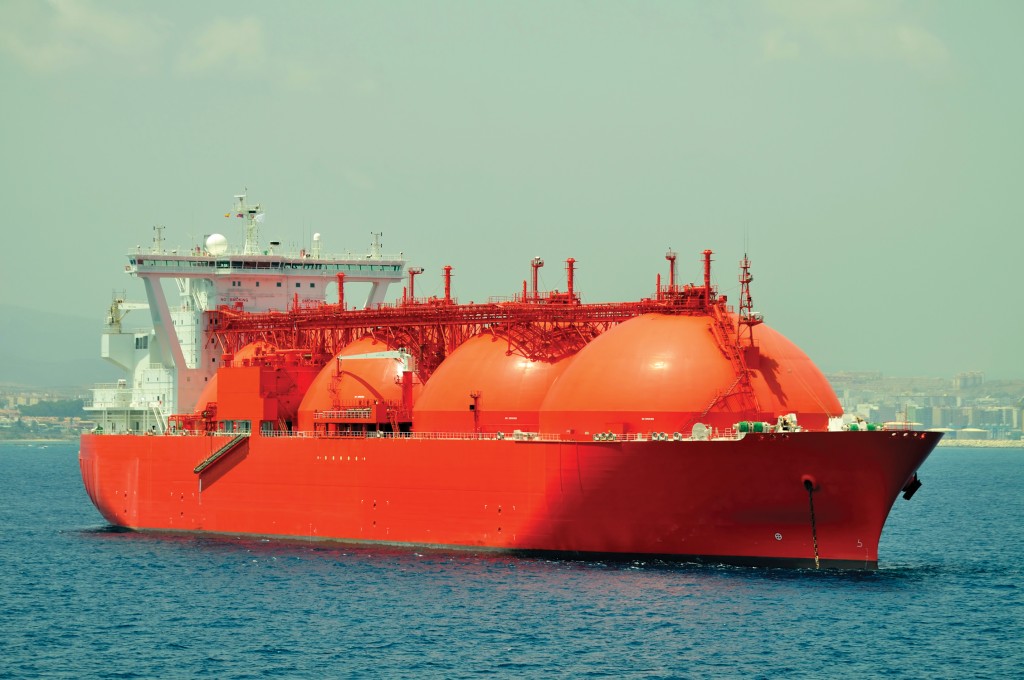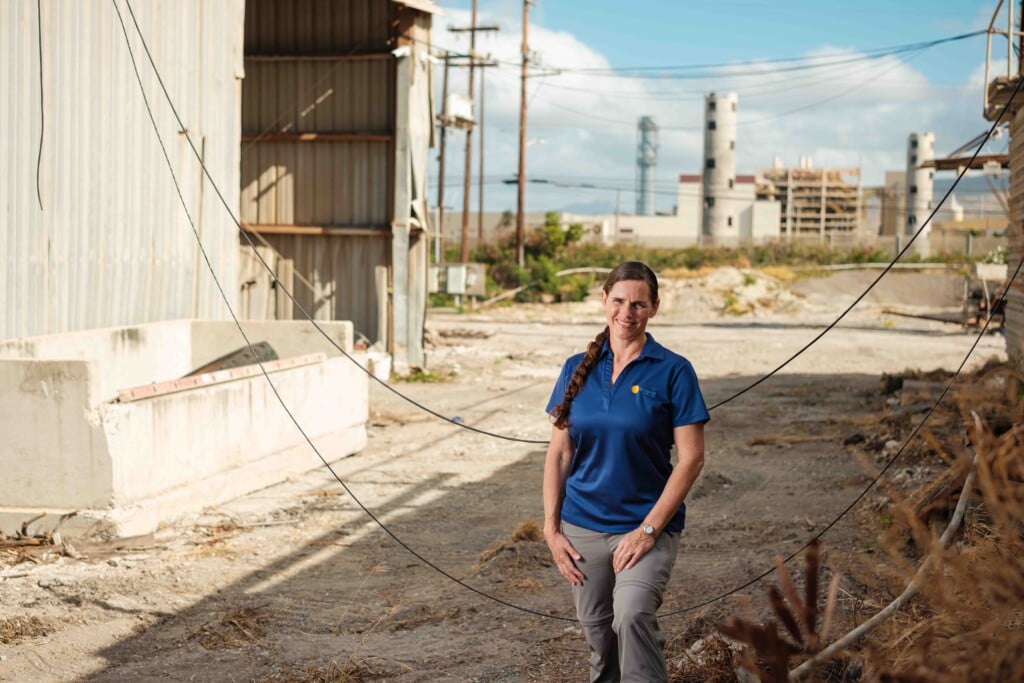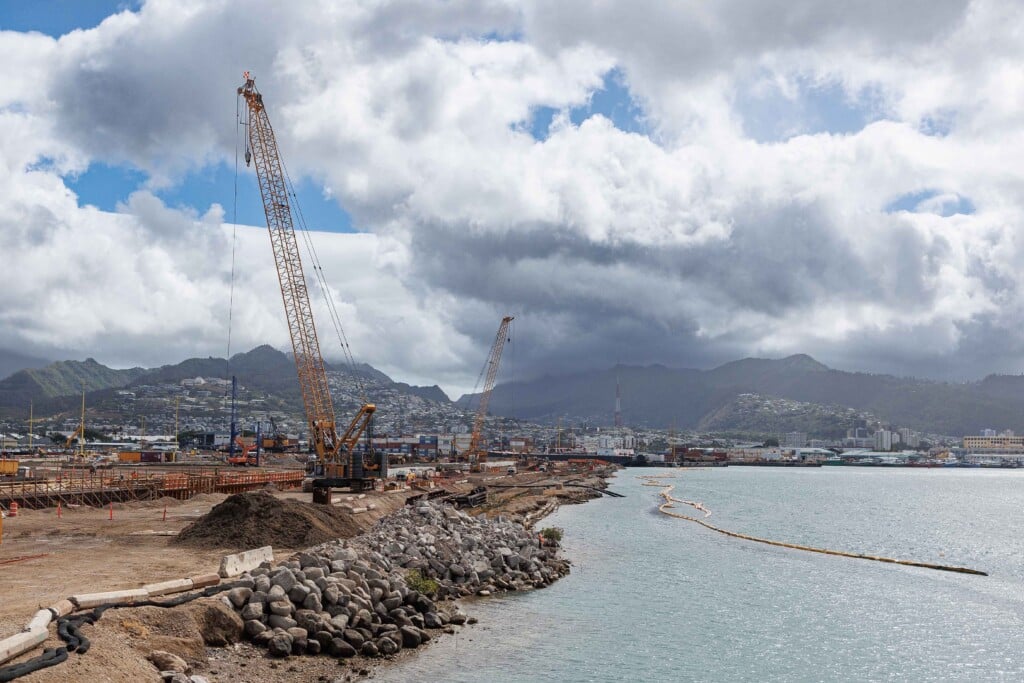Is Liquefied Natural Gas a viable option?

How quickly things change.
Ever since the Hawaii Clean Energy Initiative was announced in 2008, the assumption has been that Hawaii’s new sources of power would come from renewable energy: wind, solar, geothermal, biofuels and others. These cleaner, local sources of energy were supposed to gradually wean us off our addiction to dirty and expensive oil, and dirtier but cheaper coal.
However, the dramatic decline in the cost of clean-burning natural gas is shaking up these assumptions. Using natural gas could lower energy costs and, along the way, transform the power structure of power in the Islands. But other experts say the environmental cost of natural gas versus renewable energy is too high to pay, both for Hawaii and the rest of the world.
Recent advances in gas-drilling technology – particularly horizontal drilling and the environmentally controversial technique known as fracking – have begun to tap previously inaccessible gas reserves locked in the vast shale fields of North America. As a result, gas prices have plummeted to all-time lows. This spring, they dipped below $3 per million Btus (MMBtu). That’s the equivalent of less than $17 for a barrel of oil. In comparison, last year, HECO spent an average of $127 a barrel for oil. The price of natural gas is cheap enough to compete with coal on the mainland. So, how can Hawaii get some of that inexpensive gas?
The answer, according to key players in Hawaii’s energy sector, is liquefied natural gas. LNG is natural gas that’s been cooled to minus 160 degrees C so that it condenses into a liquid. LNG’s big advantage is that it consumes only about 1/600th the space of regular natural gas. That makes it practical to safely ship in large quantities. Regular natural gas is transported by pipeline, but, for isolated markets like Hawaii, that’s not viable. LNG may solve that problem.
If only it were that simple.
What LNG means for Hawaii
LNG isn’t just a different fuel, it’s a whole new infrastructure. Shasha Fesharaki, COO of the Honolulu-based consulting firm Facts Global Energy, sketches out the pieces:
- Liquefaction facilities to convert the gas to a liquid;
- LNG carrier ships to bring the fuel to Hawaii;
- Regasification facilities to convert the liquid fuel back to a gas;
- Storage and pipelines to handle the natural gas once it’s ashore; and
- Modifications to each utility’s electrical generators to accommodate the new fuel.
Each piece presents challenges. First, there are no LNG export facilities in the U.S. Before the fracking binge, when the gas industry expected a shortage of LNG, several import facilities were built. Many of these have now applied for export licenses from the Federal Energy Regulatory Commission. Only two, though – the Sabine Pass and Excelerate projects, both on the Gulf of Mexico – have gotten the go-ahead. Other projects are in the works on the West Coast, particularly in Oregon and British Columbia. These projects would be ideal for Hawaii, but the Oregon projects still await FERC approval, and all of the projects face permitting issues that could stretch out for years.
The shortage of LNG carriers is the most immediate impediment. According to Fesharaki, that’s because of the Jones Act, the 1920s-era legislation that makes it illegal to ship goods or passengers between two U.S. ports unless you use an American-made, American-owned and American-crewed vessel. There are no Jones Act ships to bring LNG here.
According to Michael Hansen of the Hawaii Shippers Council, the last U.S.-flagged LNG carrier slid off the skids more than 30 years ago; today, it would be prohibitively expensive to build and operate a new one. One alternative, Hansen says, would be to apply for an exemption from the Jones Act, which is what Puerto Rico is doing. Like Hawaii, Puerto Rico depends disproportionately on oil to generate electricity, so it’s going ahead with its own LNG plans and hoping the exemption comes through.
Fesharaki points out that LNG infrastructure includes a lot of costly decisions. One option, he says, is to choose traditional onshore regasification and storage. These facilities would probably have to be at Kalaeloa on Oahu’s southwest tip, but it’s not clear if there’s enough room for them. They could also cost upward of $1 billion to develop, especially if we have to dredge the harbor to accommodate a large LNG carrier. Another option is a vessel called a floating storage regasification unit (FSRU). This is essentially an LNG carrier with onboard regasifiers.
It can be moored permanently, either in a berth, or to an offshore pipeline that brings the natural gas ashore ready for consumption. The FSRU option can cost half the price of an onshore facility, but there are technical issues that would have to be settled before we could go that route. The primary issue: Can an FSRU withstand Hawaii’s sea conditions?
Where to get the gas?
But we’ve gotten ahead of ourselves. Is there any point in building costly LNG infrastructure if we’re not sure we can get that mainland natural-gas at $3/MMBtu? Maybe. It turns out natural gas supplies are expanding around the world. So, while we might not be able to buy gas from the U.S. market, prices elsewhere may be low enough to make LNG worth our while.
HECO thinks so. Robbie Alm, executive VP for public affairs at Hawaiian Electric Co., puts gas prices in context. “We’ve seen $2.98/MMBtu on the mainland,” he says, “but, by the time you made a contract, got it here and added in the shipping and building the regasification facilities, I think the numbers will be much more like the numbers discussed at the recent Hawaii Clean Energy conference: $11/MMBtu to $17/MMBtu. And most of the people in that room leaned toward $17/MMBtu.”
On the other hand, he notes, $17/MMBtu might be low enough. For example, Japan and South Korea, the world’s largest consumers of LNG, are paying about $18/MMBtu for long-term contracts. “$18/MMBtu is the equivalent of $100-a-barrel oil,” Alm says. “We’re at $130 a barrel now, so those types of numbers look pretty attractive. Maybe they don’t look $5/MMBtu attractive or $10/MMBtu attractive, like some people are pointing to, but not bad, especially if you could get a steady supply, and you were able to take 25 percent or 30 percent of our power and devote it to LNG instead of oil for the time being. That’s a huge hedge.”
Why now?
This isn’t the first time Hawaii has discussed LNG. Fesharaki and his company have already written two reports on LNG for the Hawaii Energy Policy Forum, one in 2004, and another in 2007. In both instances, the economics of LNG didn’t make sense.
What’s changed is the price, of course, but there are also changes in the way the LNG industry is structured. Traditionally, LNG developers have needed long-term, high-volume contracts to justify building a liquefaction and export facility. In 2005, HECO’s Alm says, “the LNG people basically said we’d have to give them virtually all our capacity for 20 years, plus all the capacity of our largest independent power provider, Kalaeloa. That meant we wouldn’t have been able to do any renewables. We couldn’t take any wind, solar or geothermal.”
That didn’t jibe with Hawaiian Electric’s goal of reducing its reliance on fossil fuels, especially the Hawaii Clean Energy Initiative’s standard of getting to 40 percent renewables by 2030. But the glut in shale-gas has made the natural gas industry more flexible, Alm says. “Now, the LNG folks are coming to town saying, ‘Oh, we don’t need all your capacity anymore. We need a much smaller increment.’ That means we can simultaneously pursue our renewable goals and use LNG to substitute for whatever portion of our portfolio that was going to be left in oil.”
Changes in environmental laws have also made the capital investment for LNG less daunting. Ron Cox, HECO’s VP for generation and fuel, says that to comply with new EPA air-quality standards, expected to take effect in 2014 or 2015, HECO will have to install expensive scrubbers and precipitators on its old boilers. But, Cox says, if the utility switched to cleaner-burning natural gas, those upgrades wouldn’t be necessary. “We’re looking at $900 million to $1 billion” to comply with upcoming EPA regulations, he says. “That would be a huge expense. When you compare that kind of number to the potential costs of the infrastructure to support the delivery of LNG, LNG doesn’t look so bad – especially if the fuel is cheaper and cleaner.”
The state’s regulatory climate has also changed. Alm points out that former Gov. Linda Lingle, given the option of LNG, delivered “a resounding ‘No.’ ” Now, he says, both Gov. Neil Abercrombie’s office and the Public Utilities Commission have asked the utility to take another look at LNG. PUC chair Mina Morita puts it this way: “They need to do their due diligence. If they’re not looking at LNG, if they haven’t at least considered it, that would be bad, because it’s both a lower-cost fuel and cleaner.”
Why the delay?
That support doesn’t make the transition to LNG easy.
“Assuming you’re serious about LNG,” says Robbie Alm, “the infrastructure issues of siting and permitting are probably the biggest pieces of this. … You’re going to have to get it on shore in Hawaii in a condition that we can use in our power plants. Those are the regasification and offloading facilities. And since the state is going to be deeply involved in all this, I think to just say it’s up to the developer to figure out what they’re going to do doesn’t really get you there.”
Alm intones a list of agencies that will have to sign off on LNG plans: “You’ve got Coast Guard, Army Corps of Engineers, U.S. Fish and Wildlife, DLNR, Department of Defense, and at least one EIS, maybe two.”
Then, there are environmental concerns. Those start with the controversies that surround fracking, which could still derail the natural gas boom. Fracking has received a lot of critical coverage nationally because of its potential to contaminate the groundwater that communities depend on, but there are other environmental issues. For example, while it’s true that natural gas burns cleaner than oil, much of that efficiency is lost in converting raw natural gas to LNG and shipping it. Plus, as Jeff Mikulina, executive director of the Blue Planet Foundation, points out, there’s the issue of methane release associated with any natural-gas drilling. Methane is much worse than CO2 as an agent of climate change.
But Mikulina and other environmentalists are mostly concerned with what LNG would mean for renewable energy in Hawaii. “While now we have all these great policies in place to drive efficiency and renewable energy,” Mikulina says, “a cheap fossil-fuel source would create incentives that undermine everything from power-purchase agreements, to utility-grid renewal, to individual actions like installing solar power or replacing inefficient appliances. And if, as we suspect, LNG costs are toward the higher end, then what are we doing it for?”
Mikulina also questions the wisdom of sinking so much capital into LNG infrastructure. “Is that another half a billion dollars?” he asks. “If so, what could we get with that half billion in terms of grid modernization or more storage or other technologies that really do enable more renewables?”
How does it happen?
On the other hand, it’s not clear that the build-out for LNG would entail a major upfront capital investment by HECO or state and local governments. LNG developers are accustomed to amortizing their investments over the long term. As we’ve seen, they won’t even begin development of an export facility until they have fuel contracts to offset their costs. Robbie Alm points out that this formula can be flipped on its head: For the right price, an LNG developer will not just deliver the fuel, it will build and operate the infrastructure for you.
This is the kind of arrangement Puerto Rico has made with Excelerate, an LNG developer out of Houston. Closer to home, Shasha Fesharaki says he discussed a similar arrangement with a company called Gasfin. “They ran some numbers for what they could offer Hawaii if they were going to bring LNG from Kitimat, British Columbia, to Hawaii. They had a business model where they would charge about $4/MMBtu in fees. That’s for shipping, storage, regasification – everything all in – so there’s no huge upfront cost. You pay for this as you receive the fuel. In the case of Canada, with its LNG price of about $14/MMBtu ex-ship, that would make our cost in Hawaii about $18/MMBtu.” Again, that’s the equivalent of less than $100 a barrel for oil.
Rise of Hawaii Gas
One company not wringing its hands about LNG is Hawaii Gas (formerly The Gas Co.). According to CEO Jeff Kissel, the company expects to begin importing LNG as soon as the end of the year, which raises the possibility of some ironic developments.
In some ways, Hawaii Gas’s motivations are similar to HECO’s. For example, both companies worry about their reliance on Hawaii’s two struggling oil refineries. “When I returned to The Gas Co. in 2008,” Kissel says, “the refineries were already having operational difficulties. Oil prices were headed toward $150 a barrel, and there were serious questions about the future of oil refining in Hawaii.” That represented a big threat for a company that derived almost its entire supply from one of those imperiled refineries. That’s why Hawaii Gas began to look at LNG. “I started more to assure supply rather than to reduce costs,” Kissel says. “The truth is, we expected that it would cost more, but be worth it as an emergency backup fuel. In subsequent investigations, though, we determined that it would cost less than our present feedstock, even in small quantities.”
This is the first of several advantages Hawaii Gas has over HECO. In addition, natural gas is an exact substitute for the synthetic natural gas it manufactures in its Kalaeloa plant. That means the infrastructural costs to add LNG to its system are negligible. But scale is probably the most important component of Hawaii Gas’s LNG plan. It allows them to start by bringing in LNG on Matson ships using relatively inexpensive refrigerated containers. That strategy is already being used by a company called Carib Energy to supply LNG to isolated markets in the Caribbean and Gulf of Mexico. That means most of the federal permitting hurdles have already been jumped, which is very different from the prospect facing HECO. It also allows Hawaii Gas to easily ramp up their LNG operations to fit demand. One of many ironies in this scenario is that the oil refineries could end up being major customers of Hawaii Gas. Most refineries on the mainland already operate on natural gas. “It takes a lot of fuel to operate a refinery,” Kissel points out. “Burn-ing natural gas, even at $18/MMBtu, makes a lot more sense than burning $130-a-barrel oil.” Hawaii Gas wants to supply that gas.
Hawaii Gas is so bullish on demand, Kissel says, that it’s also looking at bringing in one or two small LNG carriers. He cites as an example the Coral Methane, an LNG carrier built to service small, isolated markets in Norway and Sweden. This 384-foot ship, with a draught of 22 feet, could fit snugly in Kalaeloa Harbor without dredging or major harbor modifications. That could greatly simplify the logistics of bringing LNG to Hawaii, although, absent a Jones Act exclusion, it would have to be from outside the U.S. It’s also worth noting that the capacity of even a small LNG carrier like the Coral Methane far exceeds Hawaii Gas’s current demand. Kissel’s willingness to ramp up LNG imports in this way suggests another potential irony: Could Hawaii Gas replace one of the refineries as a major fuel supplier to HECO?
Kissel doesn’t completely shrug off the idea. “I can’t speak for the utilities,” he says, “but for small-scale electrical generation, like they use on Kauai or the units that the plantations use, those don’t require significantly more fuel than we could bring in. We could service them. And we could scale up to service the larger utilities, if that’s what they wanted. In fact, if they wanted us to, we’re obliged to, because we’re the gas utility.”
That may sound like hubris coming from the CEO of a company that processes less than 10 percent of the fuel HECO does. But it’s worth remembering that while Hawaii Gas may be comparatively small, its parent, the Macquarie Group, is a massive multinational that’s already active in the international oil and gas markets. So capital isn’t a problem.
However, there are still any number of ways LNG could go the way of other big, ambitious projects that have failed in Hawaii. Standing in the way are the usual impediments: NIMBYs, regulators, permitting agencies and environmentalists. Environmentalists here will be critical enough, but the real debate is already underway on the mainland, where the controversy over fracking is working its way through the courts. Who knows? The great glut in natural gas may turn out to be a bubble.
Hawaii’s Possible Sources of Liquid natural gas
Jones Act Sources
Existing facility in Kenai, Alaska, which currently supplies Japan.
Proposed Jordan Cove Energy Project in Oregon.
Non-Jones Act sources
Existing Sempra LNG import facility in Mexico.
Proposed projects in British Columbia.






